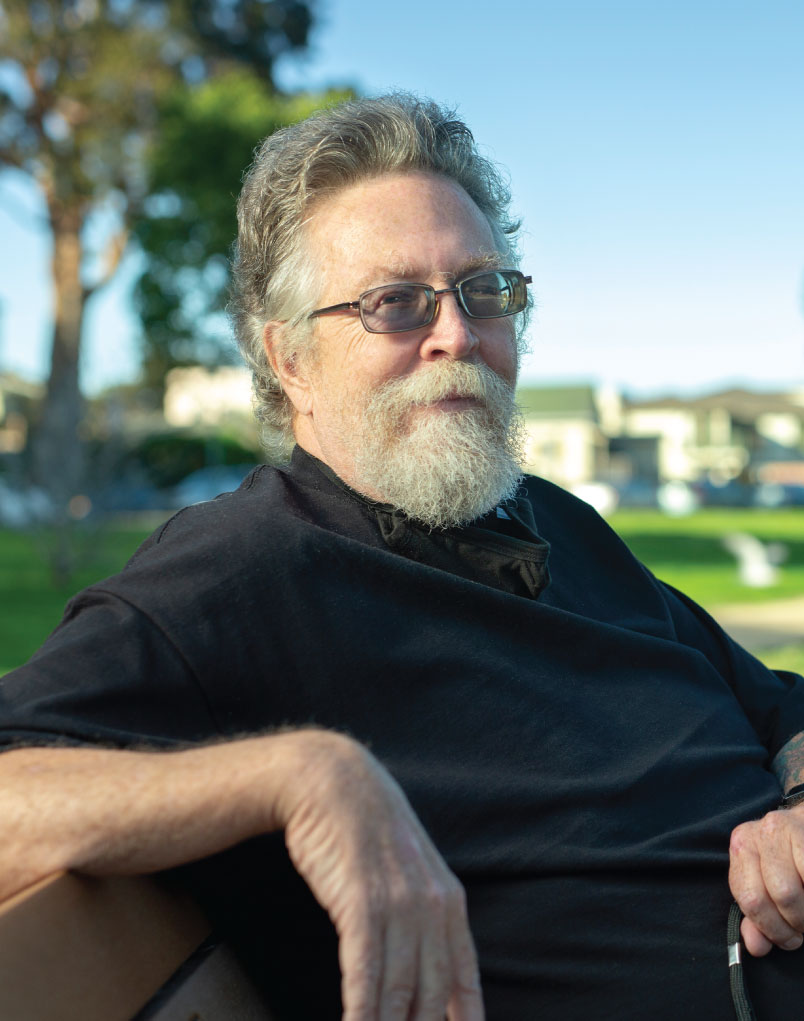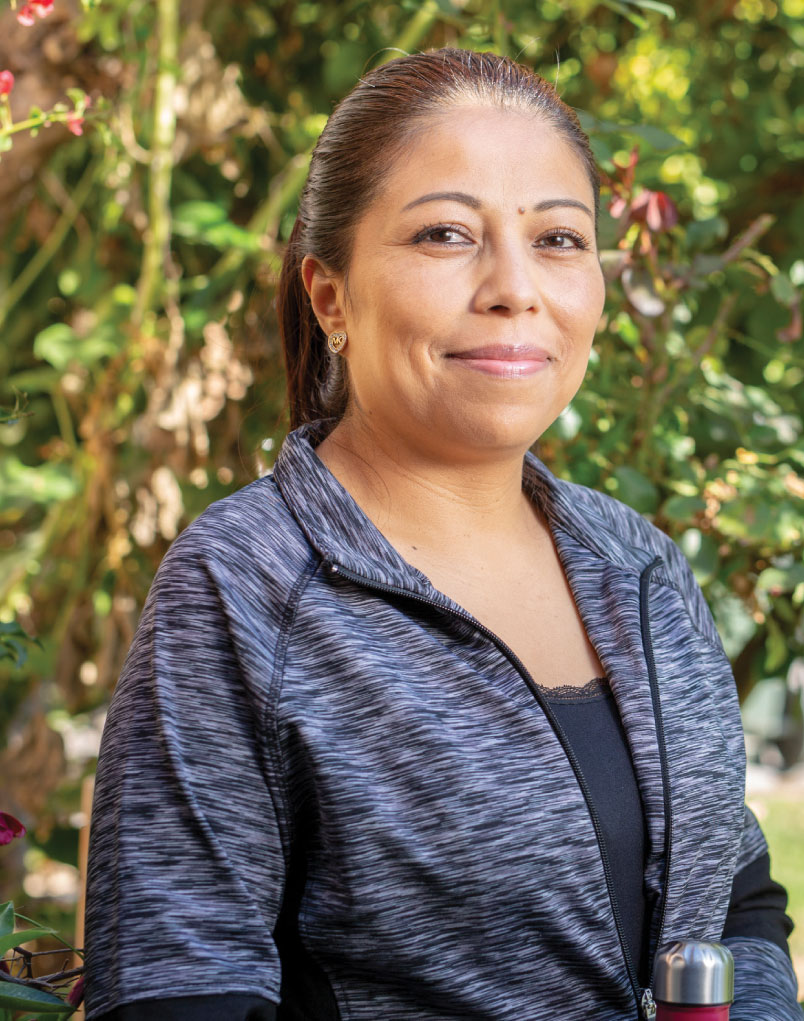
You thought you knew type 2 diabetes, think again: Meet The Beast

Type 2 diabetes and prediabetes affect 45 percent of Monterey County residents — well above the national average. In response, Community Health Innovations (CHI), a partnership formed by two of the area’s leading health systems, Montage Health and Salinas Valley Memorial Healthcare System, has taken a stand with its joint Monterey County Diabetes Initiative.
To help people understand the complexity of type 2 diabetes and to combat misperceptions, the initiative teams explored a campaign to bring the disease to life in a tangible way. That’s how “Don’t Feed the Diabetes” was born. Featuring an ornery blue beast that feeds off risky behaviors like binge-eating and skipping workouts, the educational campaign shines a light on the symptoms and dangers of diabetes. Meet The Beast above, and keep an eye out for this devious creature around town — in advertising, social media, local schools, public events, and more.
We also want to introduce you to some actual people who have diabetes — and who are proving you can do something about it. Their profiles are below.
By changing beliefs and behaviors about type 2 diabetes, we can starve The Beast — all for the good of Monterey County.
Learn more: DontFeedTheDiabetes.com
Thomas McCrea becomes his own advocate

Sitting at home one night, Tom McCrea noticed a small sore on his foot. His dad had foot ulcers from type 2 diabetes and eventually lost part of his foot, so McCrea began to worry. “I also have type 2 diabetes. I didn’t sleep at all that night.” The next morning, he went to see his doctor. The sore wasn’t an ulcer caused by type 2 diabetes, but McCrea’s proactive approach to managing his diabetes keeps him healthy.
“You’ve got to stay on top of things. I’m my own advocate,” he says. “If I don’t do it, no one else is going to do it for me.”
McCrea’s grandmother also had diabetes, and so does his mother. So, when he was diagnosed six years ago, he took the disease seriously right from the beginning. He enrolled in Community Hospital of the Monterey Peninsula’s Diabetes Self-Mangement Series, started taking classes, joined a support group, and meets with his dietitian every few months. “I ask a lot of questions. The instructors explain how to eat smarter and keep you motivated. In this community, there are people who can help you out.”
McCrea learned that he didn’t need to change everything to get healthier; he just needed to make better choices. “I stopped eating so much junk and buy healthier foods instead.”
At family gatherings, he sticks to high-protein choices and eats smaller portions. An app on his phone, My Fitness Pal, helps him track his food and count calories.
“I might have a small piece of pie,” he says “If you don’t ever indulge, you might end up binge-eating. You’ve got to figure out what works for you.”
He also walks three to four miles every day, taking along his young nieces and nephews.
“I explain to them that diabetes is genetic and they could get it, too, if they don’t eat right.” A FitBit helps keep him motivated to take more steps every day. Small changes helped McCrea lose nearly 60 pounds and drop his A1C score from 7 to 5.7.
“I was taken off Metformin over the last few months because my blood sugars have been really good.”
It hasn’t all been easy. McCrea needed a hip replacement in 2019, so he couldn’t do as much walking for a while. He developed diabetic ulcers and gained back some of the weight he had lost. The wound care team at Community Hospital helped take care of his feet, and McCrea kept his eye on his goals. He knew that if he lost the weight before, he could do it again.
Getting back on track wasn’t hard, he says. “It’s just a matter of eating a little healthier and getting some exercise. It doesn’t take much, but it makes a big difference.”
CJ Euresti takes charge

Weighing 10 pounds at birth, CJ Euresti was “always a big boy,” says his dad. By his 13th birthday, CJ weighed 287 pounds.
CJ’s knees hurt because of his weight and he developed asthma, so it was hard to be physically active. He was homeschooled because of an anxiety disorder, and the medications prescribed for it increased his appetite. Eventually, he developed acanthosis nigricans, the dark lines on the neck and other creases in skin that can be an early sign of diabetes.
And in 2019, a blood test at the pediatrician’s office confirmed it: CJ had an A1C score of 7 and a confirmed diagnosis of type 2 diabetes.
CJ was prescribed Metformin, an oral medication to keep blood sugar under control. But CJ’s mom said
“No, we’re going to do this through diet and exercise.” Both mom and dad were diagnosed with diabetes years ago and had already cut most carbohydrates and sugar from their diets. “When we found out CJ was diabetic, too, we started to make more changes.”
CJ and his parents spoke with a dietitian, who told him, “It’s not so much what you eat, but the amount you eat.” CJ learned to decrease portion sizes slowly, first by a quarter, then a third, then by half as his appetite adjusted. He also decreased his carbohydrates by eating fewer tortillas and eating hamburgers without the bun. He gave up sodas and fruit juice, drinking water instead. When the family had pizza for dinner, he’d enjoy one slice instead of two or three. CJ’s nutritionist said, “We’re not saying you can’t eat pizza. Once in a while is fine, but moderation is the key.”
CJ and his dad starting going to the park more to shoot baskets and kick a ball around. And CJ started to lose weight. He set a goal of 270, and when he hit it, he set a new goal. Then the COVID-19 pandemic arrived and his family needed to shelter in place. His parents bought a set of weights and CJ worked out at home once or twice a day. “Then he started to lose weight fast, and dropped to 240,” says his dad.
After losing 30 pounds, CJ stopped losing weight, no matter what he did. “That happens,” his dietitian told him. “You’re going to hit a plateau. Don’t worry and don’t starve yourself. Just keep doing what you’re doing and your body will adjust. If you lose one to two pounds a week, that’s good. It’s a gradual process.”
Soon, CJ started losing weight again. Ten months after his diagnosis, he is down to 209 pounds. He’s grown a few inches, too, stretching to 5’ 9” — still a big guy, but a healthy one. And his most recent A1C score is 5.4. Because type 2 diabetes is diagnosed by a test result of 6.5 or higher, that means CJ has put his diabetes into remission.
CJ’s asthma and migraines have disappeared, and he has more energy.
And when CJ turns 14 in the fall, he says he’s done with homeschooling. He wants to go to high school with the other kids his age. He’s ready.
CJ participated in Community Health Innovations’ Pediatric Wellness Program, which is funded by Montage Health Foundation.
Susana Mazon’s small steps make big differences

I am Susana Mazon. I have been married for 24 years, and my husband and I have three beautiful children.
Awhile ago, my doctor diagnosed me with prediabetes during my annual physical. I was scared because I knew that having type 2 diabetes would complicate my life. My mom has diabetes and needs to inject herself with insulin every day. I also have an aunt who lost her eyesight due to diabetes. I thought that with type 2 diabetes, life always becomes more difficult. I knew that diabetes can make you very sick and can damage your feet, heart, kidney, or your eyes — because that’s what happened to my aunt.
I knew I did not have type 2 yet, but being prediabetic was scary enough. So, I started to make drastic changes in my diet. And that made me unhappy because it was difficult to try to change everything all at once. I talked with friends who had type 2 diabetes or who had relatives living with diabetes. And that scared me even more because there was too much information, and sometimes it was contradictory or confusing.
Then I went to a meeting at my son’s school and felt much better. Community Health Innovations was there, talking about their Diabetes Prevention Program (or DPP), and I decided to join the program.
DPP taught me that I can still eat a little pan dulce, but just not at every meal. And once in awhile turned out to be enough.
Class by class, I learned how to improve my lifestyle by modifying and reducing foods instead of eliminating them. I learned that small steps like that make a big difference in making it easy to change your habits. I started losing weight and, after six months of being in the DPP, I lost 19 pounds — without crazy diets or pills or beverages that cost a lot. My health coach provides me with support and resources to help me prevent diabetes. And participating in the program cost me almost nothing.
And so, my life started changing. I knew I was making progress because I started behaving differently. I became more curious and learned more. For example, I started reviewing nutrition labels when shopping for food to be sure I was buying the right kinds of food.
I am very grateful for this program because it changed my life and it transformed my family. DPP reinforces the importance of involving your friends and family for support as you change your habits. Now our family spends more time together, cooking healthy meals and going for hikes around Monterey County. We enjoy our weekends and free time together more than ever, and we’re all getting healthier.

